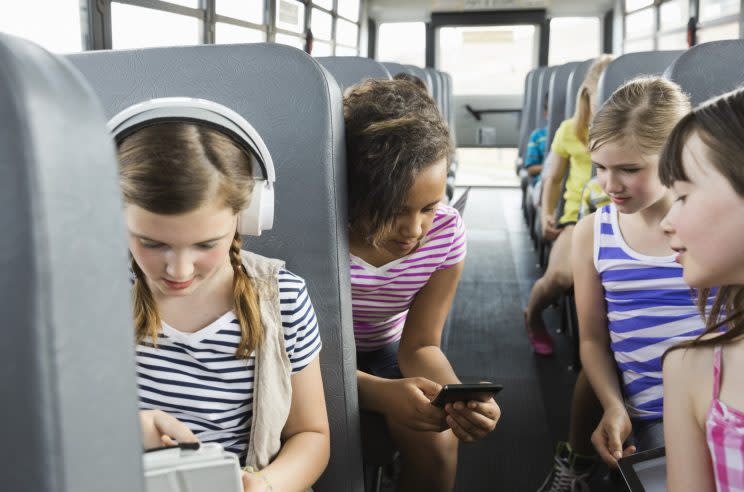Navigating your child's first cellphone

With kids getting back into their daily routine of travelling to and from school, some parents are taking advantage of the back-to-school plans offered by phone providers to get them connected. And many are starting them younger than they have in the past, says Matthew Johnson, director of education at MediaSmarts – Canada’s Centre for Digital and Media Literacy.
According to a survey by MediaSmarts conducted in 2015, more than a quarter of kids in grade four owned cellphones and another quarter had access to cell phones. By grade 11 it was about 85 per cent.
“It depends primarily on whether or not your children’s peers have them, that’s when they’re most likely to be asking for them,” says Johnston. “I know that parents will often give kids cellphones when they start walking to school on their own because they’re anxious about their kids being out of reach.”
But even once you’ve decided to get them their first phone, figuring out which device and plan to get, and cultivating a responsible cellphone user presents a series of challenges.
Phones and plans
“In the case of really young children, they’re usually looking primarily for emergency-use purposes or communication with parents and less so about consuming high amounts of data and playing online games and things like that,” says Branden Shortt, founder of comparison site The Informr.
He recommends a no-frills prepaid phone plan like SpeakOut wireless by the 7 Eleven group.
“Face value plans like $25 a month unlimited long distance within Canada,” he says. And you can even add on a bundle of data for an extra $10.
Pre-paid also has the added benefit of teaching a kid how to budget. If they run out of minutes or data one month, it can be used as a tool to teach them conservation the next month.
It introduces them to making responsible choices on the usage themselves, adds Shortt.
On their own, phones usually make up the bulk of the startup cost which is why Cameron Craig, founder of comparison site WhistleOut suggests skipping over the latest tech and buying something refurbished or, better yet, passing on a hand-me-down.
“I don’t believe any 11-year-old deserves an iPhone 7,” says Craig. “You can get an iPhone 6 or 5 refurbished rather than buying a brand new for over $1,000.”
Shortt also points to Blu, which makes “decent quality” Android smartphones for $150 and under.
Family affair
Another route to go is the shared plan where kids can be added onto a main plan under the parents’ name.
“It becomes pretty efficient to add another line to the family plan,” says Craig adding that it costs $40 to $55 per line per month on the big 3 carriers (excluding any costs of the phone). The downside, he explains, is your kid now shares in the data.
“The main thing with wireless and kids is education – it’s a mini-computer that can look up anything on the Internet at anytime, connect with any type of person and run you up a huge bill.”
While excess data often costs around $0.06 per MB, that can quickly swell to $60/GB if your kid is cruising Netflix during those hour long car rides.
“When adding to your own existing share plan, educate your kids about value of the data bucket and not to accept any opt ins for going over your data and using the excess data rate,” he adds.
Johnson agrees that education is key.
“We found, for instance, that having rules in the home about various online behaviours had a really strong relationship with how kids actually behaved and that was true even with teenagers,” he says. “It’s important as soon as your kids start using network device (to talk) with them about how to use these devices safely and responsibly.”
He also points out that it can’t be a one-time conversation.
“(It’s) something that keeps on going as they’re getting older and expanding their horizons and encountering new challenges,” he adds.
For information about specific phones or to compare rates, visit The Informr or WhistleOut.

 Yahoo Finance
Yahoo Finance 
